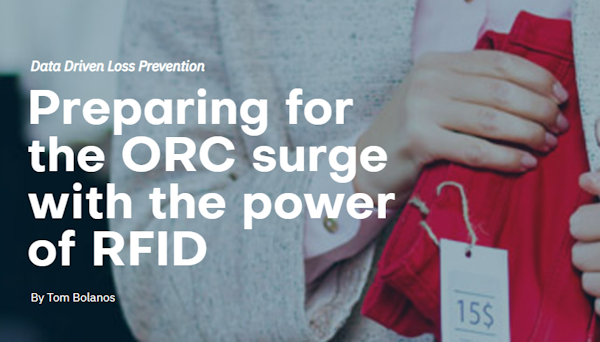

For many
years, organized retail crime (ORC) has been a major problem for retailers in
the US. In fact,
the very first issue of the Loss Prevention Magazine in 2001 had its cover
story about ORC (dubbed as organized retail theft back then). Fast forward
twenty years, ORC is still top of mind for many Loss Prevention /Asset
Protection (LP/AP) professionals.
 The
very first issue and the very first cover of the magazine in fall 2001 featured
an article by King Rogers titled "Organized Retail Theft." Perhaps it is
appropriate that this fifteenth anniversary issue also includes a feature
article on ORC.
The
very first issue and the very first cover of the magazine in fall 2001 featured
an article by King Rogers titled "Organized Retail Theft." Perhaps it is
appropriate that this fifteenth anniversary issue also includes a feature
article on ORC.
According to the
2020 Organized Retail Crime Survey conducted by the NRF, three in four
retailers who experienced ORC reported an increase in the past year. More than
half of retailers said that ORC gangs are exhibiting more aggression and
violence than they did last year. And 61% of respondents say their company is
prioritizing ORC more now compared with 5 years ago.
History has proven that theft increases after national and global events that
have major economic impact, according to
this article in Loss Prevention Magazine. And with more store closing, ORC
gangs have fewer stores to target, which likely will increase the amount of ORC
events per store. With the aftermath of the pandemic, retailers are likely to
see a significant increase in ORC overall. Retailers need to start preparing for
the post-pandemic ORC surge now. But how?
What can stop Organized Retail Crime?
Whereas the occasional shoplifter might be intimidated by setting off an EAS
alarm, ORC gangs burst out of the store with the alarms blaring behind them. If
they'll set off any alarm that is, because it's all too common they will target
items that don't have any protection whatsoever on them. Not all retailers
protect their merchandise with security hard tags (and for good reasons), but
this also means that after just one ORC sweep it's not uncommon to find your
store with dozens of items missing. And while a store employee might apprehend
the occasional shoplifter, the aggressive ORC perpetrator walks out with an
attitude of 'stop me and see what happens'. That's why most retailers
reluctantly suffer through an ORC event.
LP/AP managers may be tempted to roll up their sleeves and go back to a
cops-and-robbers approach. But as tempting as that may sound, this is not always
possible: as we showed in
our annual State of the Retail Loss Prevention Report, 45% of the LP teams
are operating with fewer staff and resources.
LP/AP managers therefore need to allocate their resources, well, resourcefully.
This is where RFID comes into play. RFID enables LP/AP managers to capture more
data, which leads to insights over the long term as well as data that can
inspire immediate actions. And fighting ORC with RFID is simpler than you might
think.
Continue Reading Here






